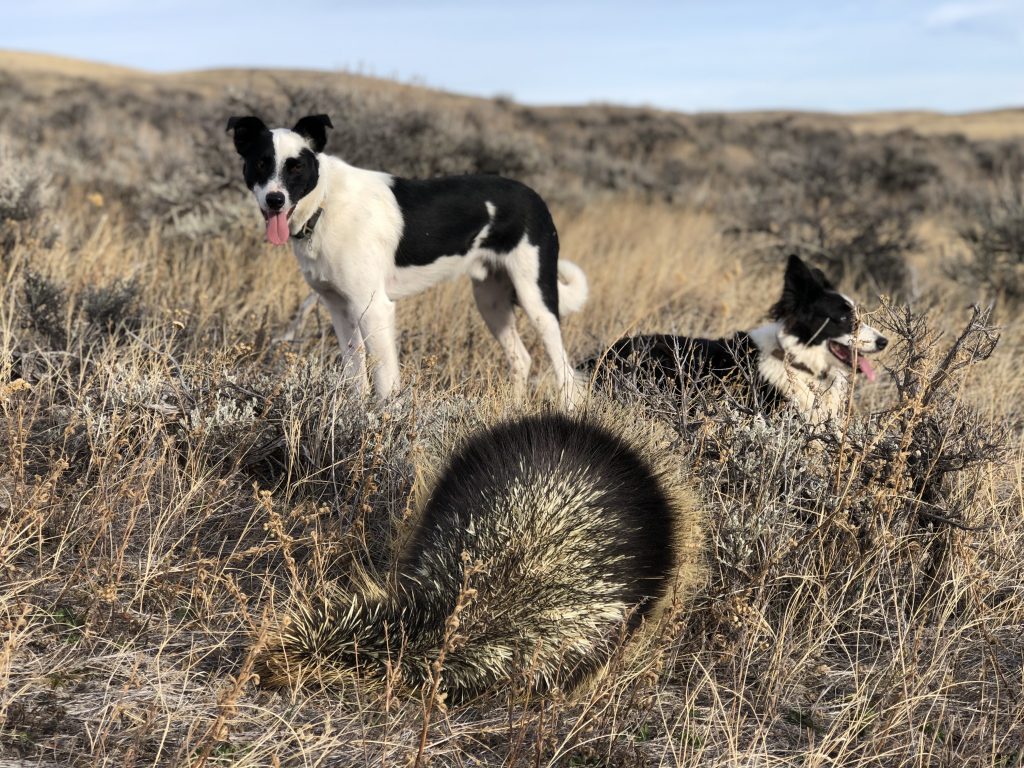Outdoor Dog Safety Knowledge
Whether you own a hunting dog dedicated to the sport or a rescue dog accompanying you on your outdoor adventures, be aware of outdoor threats to their safety. Every time you venture out the front door, assess the risks your furry companion could face. These hazards range from animal encounters to something as common as an allergic reaction.
Training
Avoid many dangers through thorough training. A well-trained dog listens to commands, obeys these commands and trusts your judgment, eliminating many problems. Run-ins with wild animals, dogs sniffing around poisonous plants and dogs straying too close to roaring rivers are avoidable with clear commands. Add a leash to your outing when your assessment foretells threats to rein in potential troubles.

Training sometimes does not include having skunks, porcupines and rattlesnakes available for firsthand encounters. Nevertheless, being vigilant and having a dog obey your commands immediately can save you grief if you spot the conflict beforehand. Our area has numerous porcupines and snakes, so I have the benefit of training firsthand. It has helped my dogs keep a safe distance between themselves and the menace.
First Aid
You may need to administer first aid to you or your dog. Carry a kit for yourself with a few extras for your canine companion. Bandages, gauze and medical tape should make up most of your kit. Along with the basics, customize your first aid kit to include tweezers and blunt-nosed scissors. Tweezers can remove a cactus spine or porcupine quill, and scissors can clip hair away from a wound to see the full extent of the injury.

Research vet-approved options, but also add saline wash for eyes and wounds, Benadryl for allergic reactions, canine styptic powder gel to slow bleeding and pet antibiotic ointment.
Also, add a pet first aid manual to the kit along with your vet's contact information, which should also be on your smartphone.
Preventative Aid
Vaccinations play a role with your dog just as they do with you. Stay up to date.
Two primary vaccinations are required, including one referred to as DA2PP, DHPP or DAPP. The DAPP acronym covers distemper, adenovirus, parainfluenza and parvovirus. The second requirement is the rabies vaccine. After that, consult your physician on other risks that vaccinations could cover.
Since my dog lives daily with rattlesnakes, I protect him with that novel safeguard. Also, discuss defenses against parasites with your veterinarian, with ticks and fleas topping the list. Over-the-counter medications work well, but your dog may also be vulnerable to roundworms, tapeworms, heartworms or whipworms. Veterinarians also provide options to microchip your pet in case of loss.
In closing, always be aware of the weather. Your dog may not be in the greatest shape, and hot weather could cause heat-related issues. Similarly, it could get too cold during a winter outing. Bring plenty of water and a dog coat if you think the temperatures will affect your friend.
